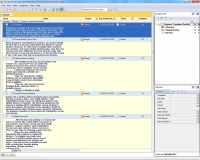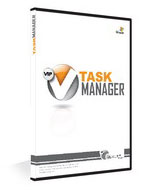|
Task Management Software |
 |
|
|
|
|
| |
|
 TESTIMONIALS TESTIMONIALS
|
|
"...This is an excellent program. I'm so glad that I stumbled on to this when researching for task management programs. Very low learning curv, quite flexible, and the price is right. Tried at least 20 other programs, either too complicated, too expensive, or poor documentation..."
Chad Lindsey -
Honolulu, HI
|
|
|
|
|
|
|
|
Business Transition Checklist |
|
|
|
|
|
|

 |
In this Business Transition Checklist we present transition as a three-step process of preparing a business for transferring to a successor. If you want to sell or hand over your company, this checklist will be helpful for you.
|
| Order 750 checklists in MS Word and PDF printable format at $49.99 USD only. |
BUY NOW!  |
1. Planning.
- Overview. Planning for transition is the first stage of the process to create a blueprint that specifies your vision of business succession. You need to develop a high-quality plan that shows why to transit the business, how to do it and who will be successors. To create such a plan you’ll need to complete the following tasks.
- Choose the Best Time to Plan. When should you start planning for business succession? Ideally the best time is a two-year period before you decide to exit your business. However, it’s often hard to estimate when exactly to exit a business. Because transition planning takes some time and resources you have nothing to lose if you start this stage early after you have set up your new business. So the best time to plan is one or two years after you have launched your business.
- Define Reasons for Exiting. Why should you exit your current business and transfer it to a successor? You can answer this question if you have clear reasons of business succession. Here’re examples of such reasons:
- Exiting current business because of another more matured, profitable and developed business.
- There are some finance-related problems such as bankruptcy, impossibility to pay off debts or/and cover all existing financial liabilities.
- There are some personal reasons including death, retirement, illness or disability, divorce.
- Changes in lifestyle or goals.
- Conduct Discovery Meeting. During such a meeting all the participants (your accountants, attorney, insurance agent, close family members, other stakeholders) review reasons for exiting your business and identify barriers to transition. The discovery meeting has the purpose of notifying all the stakeholders of your decision to transit the business. All questions of the attendees should be answered and possible transition barriers should be determined. The meeting is regarded as closed when the stakeholders accept your decision.
- Identify Successor. After the discovery meeting is over your next step is to choose who or what will be successors of your business. Successors can be your close family members, creditors, partners, other stakeholders. You can use some criteria to choose successors. There are two steps for choosing a good successor:
- Make sure your candidate has appropriate skills required for running the business. For example, you require your successor to hold the existing course of your business and implement your strategy and tactics. Then the successor should have such skills as leadership, decision making, negotiating, strategic planning, communication.
- Determine your successor’s needs and expectations. You need to arrange an open dialogue with the candidate to find out what he or she really wants and what his/her expectations regarding your business.
- Discuss Business Issues. Your final step in business transition planning is to conduct discussions of issues surrounding your business and make sure the candidate understands these issues and has appropriate solutions. It’s also about defining ways and approaches that specify how to transit the business and what role your successor will play in this process.
2. Implementation.
- Overview. When your business succession plan is developed, the next step is to start implementing this plan. Business Transition Implementation aims to help you take certain actions to sell or hand over your business to the successor. Below you can read key tasks necessary for successful implementation.
- Involve your advisory team (such as accountants, attorneys, financial experts, bankers) in your business transition project. These people will help you accomplish the project with the best results.
- Be ready to deal with the due diligence process. This process is required because for example you sell your company and the buyer needs to investigate the business and evaluate its assets for acquisition.
- Reduce your dependence on the business. You’re the owner of your business and as you transit the business you need to reduce your concern and interest in it. This step will help your successor to enter your business.
- Treat for key employees working for your company. Your business involves some key employees who should be placed under contract after you have transited the business to the successor. This step helps protect and retain the employees.
- Inform your current customers about the transition and take actions to ensure they are loyal to your successor and will remain after the sale/handover is finished. You can consider conducting surveys to get customer feedback.
3. Review.
- Overview. The final step of the process is to review the results of your implementation process and see if initial goals and expectations have been met. You can take the following actions to accomplish this step.
- Coordinate and lead your advisory team.
- Communicate and collaborate with your successor to proceed with reviewing the process results.
- Investigate current business performance and make sure it reaches appropriate levels.
- Negotiate with the successor to manage and solve post-transaction issues.
- Make sure all legal matters and financial concerts have been fully considered and there are no pending issues.
- Use historical financial data and forecasts to get insight into possible ways of your business’s development and ensure your successor takes right actions to grow and develop the business.
| Order 750 checklists in MS Word and PDF printable format at $49.99 USD only. |
BUY NOW!  |
|





 |
CentriQS Tasks Management Solution 
Looking for multi-user task management software? Try CentriQS complete task management solution for planning, tracking and reporting tasks, projects, and schedules. Increase productivity of your small business or office by better organizing your employees' tasks and time.
 FREE Download CentriQS FREE Download CentriQS
|
|
|
|
|
|
|
|
|
|
CentriQS  -15% OFF -15% OFF |
All-in-one business management software
for small and midsize enterprises |
 |
|
|
| VIP Task Manager |
Multi-user project management software
to plan, schedule and track project tasks. |
 |
|
|
| VIP Checklists
|
More than 750 ready-to-use to-do lists
to plan your personal and business life |
 |
|
|
| VIP Team To Do List |
Professional task management software
to make and send team todo lists by email |
 |
|
|
| VIP Organizer |
Personal time management software
to organize time at home and at work |
 |
|
|
| VIP Simple To Do List
|
Simple and effective to-do list software
to plan daily chores, trips, wedding, etc. |
 |
|
|
|
|
|
|
|